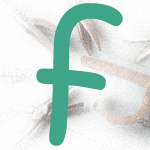Propagating
Welcome to Old Garden Tools collection of Propagating Tools. We have laid our images out in museum style so that you may concentrate just on the images without any other distractions. Just hover over the image or click on it to see a larger version with some additional information.
Please contact us if you require further information.
 Container E
Container E
English. 1950. ‘Corry’s Summer Cloud’ greenhouse shading. Mixed with water and sprayed onto greenhouse glass in summer. Makes three and a half pints. Ref: Carters Blue Book 1939. 1/2 pound tin 1/6d. H 5.3 inches (13.4cms).
 Cucumber Straightener A
Cucumber Straightener A
English. 19C. 19.5 inches (49.5cms).
The Romans used hollow reeds or canes to grow straight cucumbers Indians today grow snake gourds with a stone tied to them to encourage them to grow straight. Said to having been invented by Stephenson of Rocket fame 1845 having become frustrated with crooked cucumbers in his Tapton House gardens. He had several glass cylinders made at his Newcastle steam engine factory. In 1833, re cucumber cultivation, Allen mentions Troughs & Tubes. This is 12yrs before the Stephenson theory. In 1842 Apsley Pellatt who were renowned for making early glass tubes, were selling ‘Cucumber Tubes’. 3 years before Stephenson was credited for the invention.
 Cucumber Straightener B
Cucumber Straightener B
English. Mid 19C. with knop for tying to hothouse. 16 inches (34.5cms).
The Romans used hollow reeds or canes to grow straight cucumbers Indians today grow snake gourds with a stone tied to them to encourage them to grow straight. Said to having been invented by Stephenson of Rocket fame 1845 having become frustrated with crooked cucumbers in his Tapton House gardens. He had several glass cylinders made at his Newcastle steam engine factory. In 1833, re cucumber cultivation, Allen mentions Troughs & Tubes. This is 12yrs before the Stephenson theory. In 1842 Apsley Pellatt who were renowned for making early glass tubes, were selling ‘Cucumber Tubes’. 3 years before Stephenson was credited for the invention. The Sub-images are 1. a page from The Florist and Pomologist magazine conducted by Robert Hogg & John Spencer, December 1862. Catalogue entry from Thomas Millington Horticultural Goods 1862. The image appears to show a straightener without a knop. 2. James Phillips & Co advert for Cucumber Glasses. The earlier straighteners may have been laid flat rather than hung. Ref: Corry & Co Trade price list 1931 offered English made Cucumber Glasses of 12, 14, 16, 18,20, 22 and 24 inches.
 Cucumber Straightener C
Cucumber Straightener C
English. Mid 19C. with knop for tying to hothouse. 17.7 inches (45cms).
The Romans used hollow reeds or canes to grow straight cucumbers Indians today grow snake gourds with a stone tied to them to encourage them to grow straight. Said to having been invented by Stephenson of Rocket fame 1845 having become frustrated with crooked cucumbers in his Tapton House gardens. He had several glass cylinders made at his Newcastle steam engine factory. In 1833, re cucumber cultivation, Allen mentions Troughs & Tubes. This is 12yrs before the Stephenson theory. In 1842 Apsley Pellatt who were renowned for making early glass tubes, were selling ‘Cucumber Tubes’. 3 years before Stephenson was credited for the invention. The Sub-images are 1. a page from The Florist and Pomologist magazine conducted by Robert Hogg & John Spencer, December 1862. Catalogue entry from Thomas Millington Horticultural Goods 1862. The image appears to show a straightener without a knop. 2. James Phillips & Co advert for Cucumber Glasses. The earlier straighteners may have been laid flat rather than hung.
 Cucumber Straightener D
Cucumber Straightener D
English. Mid 19C. with knop for tying to hothouse. 15 inches (38cms).
The Romans used hollow reeds or canes to grow straight cucumbers Indians today grow snake gourds with a stone tied to them to encourage them to grow straight. Said to having been invented by Stephenson of Rocket fame 1845 having become frustrated with crooked cucumbers in his Tapton House gardens. He had several glass cylinders made at his Newcastle steam engine factory. In 1833, re cucumber cultivation, Allen mentions Troughs & Tubes. This is 12yrs before the Stephenson theory. In 1842 Apsley Pellatt who were renowned for making early glass tubes, were selling ‘Cucumber Tubes’. 3 years before Stephenson was credited for the invention.
The Sub-images are 1. a page from The Florist and Pomologist magazine conducted by Robert Hogg & John Spencer, December 1862. Catalogue entry from Thomas Millington Horticultural Goods 1862. The image appears to show a straightener without a knop. 2. James Phillips & Co advert for Cucumber Glasses. The earlier straighteners may have been laid flat rather than hung.
 Cucumber Straightener E
Cucumber Straightener E
English. 19C. 23 inches (58.5cms).
The Romans used hollow reeds or canes to grow straight cucumbers Indians today grow snake gourds with a stone tied to them to encourage them to grow straight. Said to having been invented by Stephenson of Rocket fame 1845 having become frustrated with crooked cucumbers in his Tapton House gardens. He had several glass cylinders made at his Newcastle steam engine factory. In 1833, re cucumber cultivation, Allen mentions Troughs & Tubes. This is 12yrs before the Stephenson theory. In 1842 Apsley Pellatt who were renowned for making early glass tubes, were selling ‘Cucumber Tubes’. 3 years before Stephenson was credited for the invention.
 Cucumber Straightener G
Cucumber Straightener G
Hungarian. Late 20C. Copy of Victorian Cucumber Straightener. Lightweight construction. 16 inches (40.5cms).
 Cucumber Straightener I
Cucumber Straightener I
English. 19C. 18 inches (45.7cms).
The Romans used hollow reeds or canes to grow straight cucumbers Indians today grow snake gourds with a stone tied to them to encourage them to grow straight. Said to having been invented by Stephenson of Rocket fame 1845 having become frustrated with crooked cucumbers in his Tapton House gardens. He had several glass cylinders made at his Newcastle steam engine factory. In 1833, re cucumber cultivation, Allen mentions Troughs & Tubes. This is 12yrs before the Stephenson theory. In 1842 Apsley Pellatt who were renowned for making early glass tubes, were selling ‘Cucumber Tubes’. 3 years before Stephenson was credited for the invention.
 Cucumber Straightener J
Cucumber Straightener J
English. 19C. 18 inches (45.7cms).
The Romans used hollow reeds or canes to grow straight cucumbers Indians today grow snake gourds with a stone tied to them to encourage them to grow straight. Said to having been invented by Stephenson of Rocket fame 1845 having become frustrated with crooked cucumbers in his Tapton House gardens. He had several glass cylinders made at his Newcastle steam engine factory. In 1833, re cucumber cultivation, Allen mentions Troughs & Tubes. This is 12yrs before the Stephenson theory. In 1842 Apsley Pellatt who were renowned for making early glass tubes, were selling ‘Cucumber Tubes’. 3 years before Stephenson was credited for the invention.
 Cucumber Straightener K
Cucumber Straightener K
English. Mid 19C. Blind ended Straightener. Not designed to hang in hot house. 13.3 inches (34cms).
These without a knop were probably the earliest form of Tube and the hanging model was probably a later innovation.
The Romans used hollow reeds or canes to grow straight cucumbers Indians today grow snake gourds with a stone tied to them to encourage them to grow straight. Said to having been invented by Stephenson of Rocket fame 1845 having become frustrated with crooked cucumbers in his Tapton House gardens. He had several glass cylinders made at his Newcastle steam engine factory. In 1833, re cucumber cultivation, Allen mentions Troughs & Tubes. This is 12yrs before the Stephenson theory. In 1842 Apsley Pellatt who were renowned for making early glass tubes, were selling ‘Cucumber Tubes’. 3 years before Stephenson was credited for the invention.
 Cucumber Straightener L
Cucumber Straightener L
English. Victorian. 22.5 inches (57cms).
.jpg) Cucumber Straightener M
Cucumber Straightener M
English. Victorian. This one was manufactured with no knop. Laid on bench to propagate. 19 inches 48cms.
 Flower Pot H
Flower Pot H
English. Early 20C. Terracotta Orchid Pot.
 Flower Pot Q
Flower Pot Q
English. Mid 20C. 3 cup shaped terracotta pots.
 Grafting Knife A
Grafting Knife A
English. 20C. Steel folding blade stamped ‘Guest Sheffield’. Mahogany handle. Open 7 inches (17.8cms). Closed 5 inches (12.7cms).
 Grafting Knife B
Grafting Knife B
English. 20C. Steel folding blade stamped ‘Saynor Sheffield’. Fine hardwood handle and brass ferrule. Open 6.75 inches (17.4cms). Closed 4.7 inches (11.9cms).
 Grafting Knife C
Grafting Knife C
English. Steel folding blade stamped ‘Abtus. Made in England Stainless Milner Sheffield’. Stainless steel body and long fixed stainless steel lever. Open 5.5 inches (14cms). Closed 4 inches (10.2cms).
 Grafting Knife D
Grafting Knife D
English. 20C. Steel heart shaped scalpel stamped ‘Eden Fisher & Co Ltd’. Mahogany handle. 5.6 inches (14.7cms).
 Grafting Knife E
Grafting Knife E
French. Mid 20C. ‘Pradines’. Steel folding blades and bakelite handle. Open 7.25 inches (18.5cms). Closed 3.8 inches (9.7cms). ‘Pradines’ was a trademark from 1865 when secateur production was started. in 1934 Roger Deville bought the trademark. in 1959 the company of 35 employees leaves Les Mureaux Paris and set up in Bauge, Maine et Loire.
 Grafting Knife F
Grafting Knife F
English. 20C. Folding steel blade Bakelite scales and brass lever. Stamped ‘C K’. Open 5.5 inches (14cms). Closed 4 inches (10.1cms).
 Grafting Knife G
Grafting Knife G
English. Early 20C. Inscribed ‘Sheffield Made’. Ebony handle and steel blade. 6 inches (15.5cms).
 Grafting Knife H
Grafting Knife H
English. Early 20C. Ivory handle and steel blade. Inscribed ‘J Clarke & Son. Sheffield’. 4.75 inches (12cms).
 Greenhouse Heater B
Greenhouse Heater B
English. Early 20C. Brass and steel with burner.
 Greenhouse Heater C
Greenhouse Heater C
British. 20C. ‘Eltex Queen burner. British’. Green painted tin. Brass burners. 41.5 inches H (105cms). 15.5 inches W (39.5cms).
 Greenhouse Heater E
Greenhouse Heater E
English. 20C. ‘P J Bryant’ Bristol. ‘Eltex’ Brass reservoir. 12.5 inches H (32cms). 10 inches Dia (26cms).
 Ringbarking Tool A
Ringbarking Tool A
English. 20C. Stamped ‘L Gardner Tree Ringer. Patent No. 226901’. Steel and ash. 9.75 inches (24.5cms).





 Cucumber Straightener F
Cucumber Straightener F
 Cucumber Straightener H
Cucumber Straightener H
 Flower Pot M
Flower Pot M

 Greenhouse Sign
Greenhouse Sign
 Plant Pot E
Plant Pot E
 Seed Tray A
Seed Tray A